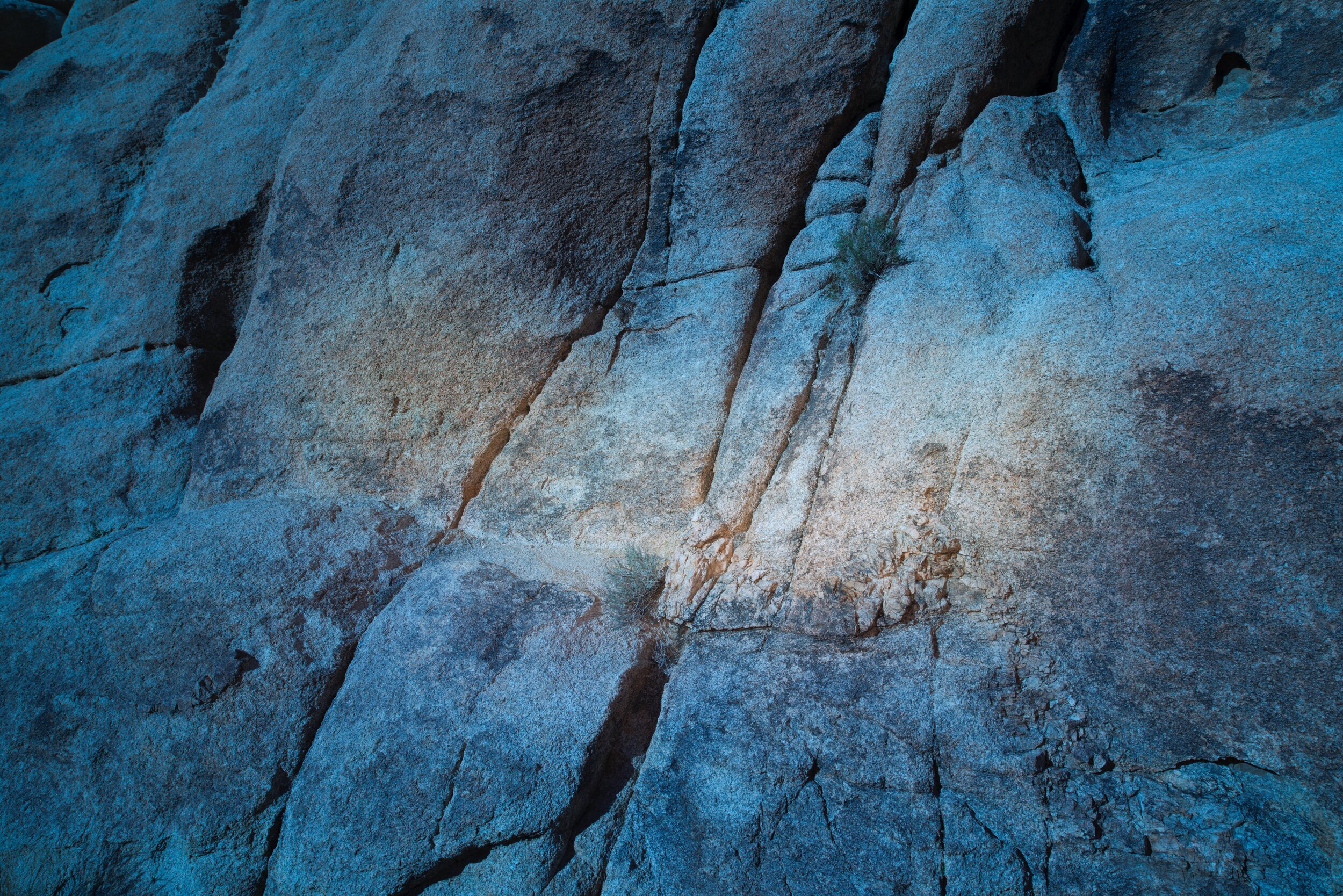Joshua Tree
Despite what it might appear at times, I'm not naturally inclined to manipulate images. I like black and white and I like to boost the saturation of colors. I like needlessly high resolution and I like making photographs off of the screen of old, hopelessly low-res television sets.
Sometimes what appears as "photoshop" is nothing of the sort. This Joshua Tree project is an example. Something weird is going on with the color, with all that blue and the center of the image in more natural colors. The effect isn't digital in any significant way--it was achieved by sacrificing a camera-mounted flash unit.
It used to be a standard piece of gear for every photographer, whether professional or hobbyist: The shoe-mounted strobe unit. They came in different sizes with different amounts of light output. The big ones were bulky and could flash quite brightly (although "brighter" flashes were, in reality, just flashes of longer duration).
In Joshua Tree I set my camera to the "tungsten" white balance setting, essentially mimicking a kind of professional film intended for use under hot studio lights, which gave off a color somewhat different than what the Sun produces, say on a clear day in the desert. Since the (tungsten) color balance of the film and (tungsten) lights matched, the resulting image would look natural to the eye. But shoot that same film outside at noon when the light was much "colder" and it would look all blue--the film was expecting a much "warmer" light source (i.e, a tungsten filament, not the Sun) and thus it would print far too blue.
They made filters that would correct for this, to let you shoot tungsten film outside, back in those days when you might want to shoot a few shots on your roll of film indoors and then switch locations. Same film, different lighting, and filters make it all look good.
It works the same with digital. Set your camera to a tungsten white balance and shoot outside and you'll get blue images. And that is what I did. Only, to make things more interesting I fired a high-powered flash into the scene, one that had a color-correcting filter over the flash, so that the light coming out of the flash (which is normally "daylight" color) was adjusted to look correct for tungsten. Thus the center area of the picture, and only those center parts that are near enough to the flash to receive its light in any quantity, are "normal" color, the rest of the frame (and the more distant central areas) are blue.
The sacrifice? With the dark filter over the face iff the pasha and with my many "pops" of the unit, firing it many times in a row on a hot day, the plastic lens of the blackened and partially melted. Now it gives off a light with a slightly darkened center, due to the damage.











